#considering that both of these handhelds released in 2011
Explore tagged Tumblr posts
Text
Listening to a video game talk in the background of my work and like... were smartphones already so big in 2013? As in, widely adopted to the point of high schoolers bringing them to school? Was that an America/Western Europe thing? I know I have memory issues and 2013 just so happens to be the time that I have trouble remembering but... really? 2013? Was that a thing? Maybe it was and I just can't recall? Uhhh?
I know me not having a smartphone in like 2015 was weird, to the point where I was the 'retro tech' guy back near the end of middle school but... uh. I'm a little confused.
#the point the speaker made was the one I heard many times before which is that the timing of the 3DS and PS Vita releases was unfortunate#since smartphones came about and took over most of the casual market that the DS thrived in#but then he said '2013' and it hit me like a brick#which... I'm surprised it didn't hit me earlier#considering that both of these handhelds released in 2011#and the Vita died like... so freaking quickly#while the 3DS was struggling for a little while there#I guess I have problems with placing all that stuff on the timeline#I got my 3DS in like... 2015 I think? it was a middle school graduation gift#and I know that back then I used my 3DS to do the things that other people did with their smartphones#(connecting to Wi-Fi on the go or taking pictures or watching YouTube)#(or playing games obviously)#I got my smartphone in 2016 but I still brought both to school considerably often#and now I'm wondering just how silly it might've looked to those rich kid classmates of mine lol#(the only people that brought it up was the guy who went to middle school with me and the guy I ended up being friends with for a while)#(oh and the one guy who knew me from grade school and asked to borrow my 3DS charger once 'cause he found a DSi)#(and wanted to know if it actually worked)#anyways sorry rant over
11 notes
·
View notes
Note
what is your favorite classic sonic game and favorite modern sonic game? also if you like, mania can be grouped with the classic games :]
I already gave an answer to my favorite classic game, so I'll answer this portion with my second favorite classic Sonic game: Sonic CD!

Or more specifically the 2011 remaster made by Christian Whitehead. I never got to play the original Sega CD release nor the Sonic Gems Collection version, but honestly I don't need to because this remains the best version of the game to play and may very well be the best remaster of any video game ever! It not only enhances the visuals and gameplay speed, but also lets you pick between the Japanese and American soundtracks + giving you the option to play as Tails!
The only aspect of the game that puts it slightly (and I mean VERY slightly) below Sonic 3K for me is because I need to be in a certain mood to get fully immersed in this game's level design. It's more vertical and chaotic than the smoothly paced greatness that is 3K's zones, but when I'm in the mood to explore and embrace the zaniness of it all it truly is one of the best and most unique platforming experiences out there ✨
(Also the Japanese OST is the best Sonic soundtrack ever made and one of the best in all of gaming imo)
Now as for my favorite modern Sonic game...

Oh yeah, I'm so predictable and I don't care 😎
I consider SA2 to be the last of the "Classic Era" of Sonic games, but by the franchise's technical definitions of what differentiates classic from modern Sonic this would technically be a "Modern Sonic" game due to Sonic's gameplay and design here. Honestly I hate what Sega did by separating the 2D and 3D games into different universes since I think it's kinda lame and takes away the connected storyline the series once had (something even Sonic Generations didn't tamper with for its crossover).
But anyway, my love for SA2 goes beyond mere nostalgia. For me this game will always be the series's flawed masterpiece; a game that put so much effort into every single component of its level design and story that, while not always hitting the landing, still provided us with a truly unforgettable experience.
To me this game not only remains the best controlling and most consistently entertaining 3D Sonic game, but also the last Sonic game that truly put the effort into EVOLVING the mechanics from the previous game.
This point might piss some people off, but really think about it. When was the last time a mainline Sonic game, not counting the handhelds, which both fixed the fundamental flaws of its predecessor and added onto them in new and meaningful ways?
Sonic Heroes's team-based mechanics were dropped immediately for Shadow the Hedgehog's morality system and gun gameplay, which too was quickly dropped by the next game. Sonic 06 tried and failed spectacularly to continue the Adventure formula. The Storybook games aren't mainline games but there are many who are divisive on whether Black Knight truly fixed most of the issues of Secret Rings.
Even the boost games didn't do this. Colors only removed the added gameplay mode of Unleashed's werehog levels without actually changing the automation of boosting, and Generations only separated the 2.5D and 3D gameplay without changing the boost formula either. Lost World created a brand new parkour system that was never touched by any future games ever again. Rise of Lyric's puzzle and beat-em-up elements were never attempted again. Sonic Forces went back to the boost formula with zero tweeks to the gameplay, and Frontiers made everything open world and seemed to reinvent the formula AGAIN.
I don't care if I sound old school at this point, this series has developed a major identity problem. For me SA2 will always be the true sendoff for the Golden Age of the blue hedgehog because it was the last game that was allowed to grow and take chances before Sega put Sonic Team and its future games in a capitalistic stranglehold. Even the boost trilogy will never compare to this one for me because, as polished as those games are, their gameplay and stories just don't appeal to me nearly as much as this amazing game 💙🖤
#asks#sonic the hedgehog#at this point I don't even know what's considered 'controversial opinions' in this fandom anymore#I can't keep up with them anymore#and besides I'd rather stay in my bubble of older games and be happy as opposed to getting angry w/ each new release ;-)
1 note
·
View note
Text
Playing Classic Games in HD Shouldn’t Be a Crime

In the realm of video games, there exists a tapestry woven from threads of innovation and nostalgia. One such golden thread is ‘The Legend of Zelda: Ocarina of Time’, a game released in 1998 for Nintendo 64 that set new standards in the adventure genre. It introduced us to a three-dimensional Hyrule full of mystery, danger, and intrigue — all to be solved and resolved by our hero Link as he wielded his trusty Master Sword against evil forces.
The Nintendo 3DS version, which came out in 2011, enhanced this masterpiece even further by adding sharp visuals through its enhanced graphics and improved controls optimized for the handheld console. Now, thanks to dedicated gamers and technological advancements, the 3DS version of ‘Ocarina of Time’ can now be experienced in all its glory on personal computers via emulation software.
Emulators allow players to run console or arcade games on their PC or mobile device. For example, if you wanted to relive your childhood memories playing SNES classics like Super Mario World but don’t have access to that system anymore, you could download an emulator onto your PC and play those same games without needing the actual hardware. Emulating ‘Ocarina of Time’ on PC opens up possibilities beyond what was originally available on either the N64 or 3DS platforms.
These enhancements include upscaled textures and shaders to give the game a crisp, modern look while still retaining its original art style. Think of it as applying a fresh coat of paint to a timeless piece of artwork; it enhances the overall experience without compromising its essence.
To put into perspective just how much of a difference these modifications make, consider that the native resolution of the Nintendo 3DS version of ‘Ocarina of Time’ is only 400x240 pixels. By comparison, most modern PC monitors support resolutions well above Full HD (1080p), with many supporting Ultra HD (4K) resolution. The leading texture pack project for Ocarina of Time 3D brings the internal resolution of the emulated game up to these lofty heights, while adding shader support via ReShade post-processing effects.
As mentioned before, emulators allow users to play console games on their computers. However, in order to do so legally, one must first obtain a ROM of the game they wish to play — which can prove challenging due to copyright laws surrounding intellectual property. This is where things become murky; downloading a ROM of a game you already own isn’t necessarily illegal, but distributing said ROMs certainly is. So while this option may seem appealing to some, it’s important to understand the complexities involved before diving headfirst into the world of PC emulation. The average user will bear no responsibility for a ROM downloaded from an online repository, but if the same user were to acquire the ROM via torrent file sharing, there is the very real possibility that they will receive a strongly worded warning letter from their Internet Service Provider, or possibly worse.
If you choose to proceed with caution and respect both the developer’s wishes and the specific (and well litigated) limits imposed by copyright law, however, you will be rewarded with an unparalleled gaming experience. Using texture packs and emulator upscaling, these games can often look better than ever before, surpassing even the official HD remasters released for subsequent systems.
In the case of Ocarina, every leaf on every tree, every crack in the stone walls, and every stitch in Link’s green tunic comes alive with newfound clarity and detail. It’s almost as though time itself has stood still since 1998, allowing us to revisit Hyrule in ways we never thought possible.
When compared directly side-by-side-by-side, the differences between the three versions of Ocarina of Time are easy to see. While the original hardware undoubtedly holds a special place in our hearts, there is something truly magical about seeing this iconic title running at the native resolution of a modern PC. The combination of increased performance, higher frame rates, and expanded color palettes makes for a far more immersive and enjoyable journey through the land of Hyrule than was ever achievable when playing on the Nintendo 3DS.
In conclusion, despite the legal gray areas surrounding the use of ROMs, there is little doubt that using a PC emulator to play games like The Legend of Zelda: Ocarina of Time is worth the effort. Whether you are seeking to relive fond childhood memories or simply want to discover what all the fuss was about back in 1998, emulating with texture packs on PC provides an unrivaled opportunity to experience these timeless classics in a whole new light. Just remember to exercise caution when acquiring your ROM, and always respect the wishes of the developers who poured their souls into creating all of our beloved classic games.
0 notes
Text
Puppetry Lost Media

In honour of reaching 50 followers last week (now 55 followers, as of writing this) I decided to cover two subjects of great interest to me: puppetry (of course) and lost media.
Everybody online loves a good old bit of lost media. Whether it be being a part of the many searches for the media in question, or watching documentaries about them on sites like YouTube. I’ve been mildly addicted to the latter kind of content for a while. From what I’ve seen, though, there aren’t many videos or articles out there specifically covering lost puppetry. So, in no particular order, here are a couple of pieces of lost puppetry I found while scrolling through the lost media wiki.
銀河少年隊 - Ginga shounen-tai AKA Galaxy Boy Troop (1963 - 1965)
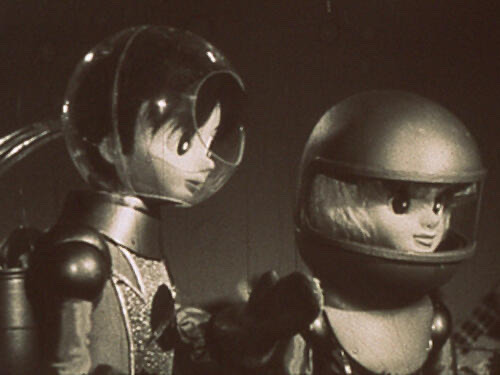
Osamu Tezuka is one of the most pioneering figures in Japanese art and animation. Starting as a manga artist in the 1940s inspired by the animated works of American studios such as Walt Disney and the Fliecer Brothers, he adapted and simplified many of the stylistic techniques of both artists to create his own signature style of big shiny eyes, physics defying hair and limited animation. A style that would go on to heavily influence the world of anime and manga as a whole.
But animation and graphic art were not the only mediums Tezuka would dabble in. Ginga Shounen-Tai, or Galaxy Boy Troop in english, was a television series that aired on the public broadcast channel NHK from April 7th, 1963 to April 1st, 1965. Running for 2 seasons with a total of 92 episodes.
The series was a mixture of marionette characters that utilised the Supermarionation marionette technique, popularised by Jerry Anderson’s Thunderbirds, and limited traditional animation. The story revolves around a child genius named Roy who leads a rag-tag group of heros around the galaxy in a rocket ship in order to revive the earth’s sun and later protect it from alien invaders.
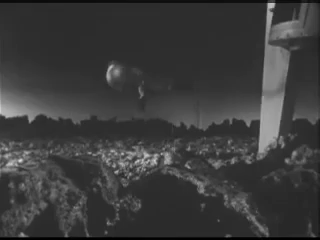
Out of the 92 episodes that aired, only episode 67 still exists in its entirety with French subtitles, and the full episode can be found on YouTube with English subtitles uploaded by user Rare TezukaVids. According to user F-Man on the Tezuka in English forums, footage of episode 28 exists but with no audio, and episode 87’s animated segments exist without the marionette segments. F-Man also claims the reason for Galaxy Boy Troop’s disappearance is due to Tezuka not being proud of the series and having all episodes of it destroyed.
Personally, I think it’s a shame that pretty much all of this series is gone. From what I’ve seen in episode 67, it looks really charming. Tezuka’s signature character design style was adapted suprisingly well to marionettes, and the puppetry itself isn’t that bad either. I love the little face mechanisms like the blinking eyes, flapping mouths and others. It gives the puppets a lot of personality and charm. Like, just look at this old mans eyebrow mechanism and tell me you wouldn’t want to watch 92 episodes of this show;

Tinseltown (2007)
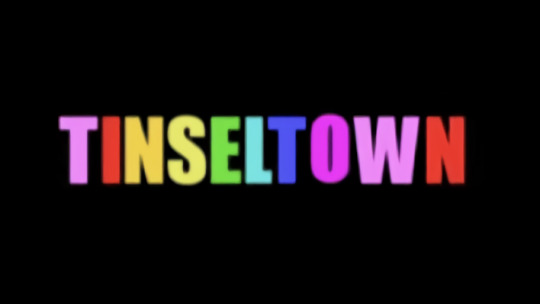
Tinseltown was a 15 minute sitcom pilot created by the Jim Henson company under thier Henson Alternative banner. The pilot was commissioned by the Logo Network and aired as part of the Alien Boot Camp programming block in 2007.
The pilot (and likely the series, had it been picked up by the logo network) features a cast of both puppets and live actors as characters. The premise revolves around Samson Kight, an anthropomorphic bull preformed by Brian Henson and drew Massey, and his partner Bobby Vegan, an anthropomorphic pig prefomed by Bill Barretta and Michelan Sisti, as they attempt to balance thier lives working in Hollywood with life as parents to thier sullen 12-year-old foster son, Foster, played by Paul Butcher. Other human characters included Mia Sara as Samson’s ex-wife Lena and Francesco Quinn as the family’s manservant Arturo.
The Tinseltown pilot used to be available on the Logo Network’s YouTube channel, but was later removed for unknown reason. Since then, the pilot has not been made available online. However the characters Samson and Bobby have made appearances in other Henson related works, such as the improv stage show Stuffed and Unstrung, where they played the role as the shows producers, and in a 2011 video on the Jim Henson Company YouTube channel celebrating Jim Hensons 75th birthday.
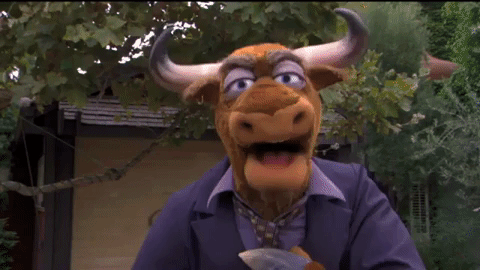
I find Tinseltown pretty interesting as I feel like it should be more noateable or known, considering that this is (as far as my knowledge goes) the first Jim Henson Company project featureing openly lgbtq characters as its leads, and would have been the first Henson show to do so had it been picked up. As someone who’s interested in lgbtq+ representation in creative media such as animation, I realised that there’s not many examples of canon lgbt characters in puppetry. The only ones aside from Samson and Bobby I could think off the top of my head would be Deet’s Dads from The Dark Crystal: Age of Resistance and Rod from Avenue Q. Though, obviously, there could be more I’m not currently aware of. I don’t think the Tinseltown pilot was a masterpiece or anything. After all, there’s probably a couple of good reasons Logo didn’t pick it up for a full series. But I think it be cool if either Henson co. or Logo made this available online again, if just so we could appericate it as an interesting little footnote in the history of lgbtq rep in puppetry.
With that said, considering the pilot’s obscurity and the fact that it’s main couple haven’t been used in any Henson Related projects in almost ten years, as well as the possibility that there may be legalities preventing the Henson company from releasing it such as Logo still owning the rights, it’s unlikely we’ll see the Tinseltown pilot anytime soon.
Sonic Live in Sydney (1997 - 2000)

Sonic the Hedgehog is a fictional character no stranger to multiple interpretations of him and his universe across a diverse range of media. From the more light-hearted and comedic stylings of The Adventures of Sonic the Hedgehog and Cartoon Networks Sonic Boom cartoon series, to more serious faire such as the Sonic SatAM cartoon and the Sonic Adventure videogame duology. One of the more obscure and stranger adaptations of the character came in the form of Sonic Live in Sydney, a one an a half hour live show hosted at the former Sega World Sydney amusement park in Darling Harbor, Sydney, Australia. Originally beginning as a live show with actors in meet-and-greet style costumes, the show eventually was replaced with a puppet show during its last two years.
The shows plot was set in an alternate timeline whos continuity was a mix of the SatAM cartoon and Sonic the Hedgehog 3, where Doctor Robotnik’s Death Egg crash lands in Sydney, Australia instead of Angel Island and attempts to take over before being foiled by sonic and friends. According to Phillip Einfeld of Phillip Einfeld Puppetoons, the company that made the puppets, Sega felt the costumed actor version of the show wasn’t dynamic enough, and wished to replace it with a version featuring live puppets with animatronics. Both versions of the shows plot are identical.
While Sonic Live in Sydney’s soundtrack is available on YouTube, and some photos of the show are available on the Lost Media Wiki, no footage of either the costumed actors version or the puppet show version have resurfaced. The show was closed down in 1999, possibly due to cost, shortly before the Sega World park as a whole in 2000. So unless there is someone out there who viseted the show between 1998 or 1999 who recorded the show via a handheld camera, footage of both incarnations of the show are likely forever lost to time.
On a personal note, I don’t have much to say on this one other than how gloriously peek gaudy 90s Sonic the set/puppet design is. I have no doubt finding footage of these puppets in action would truly be a silly delight to behold...
Legend of Mary (year unknown)
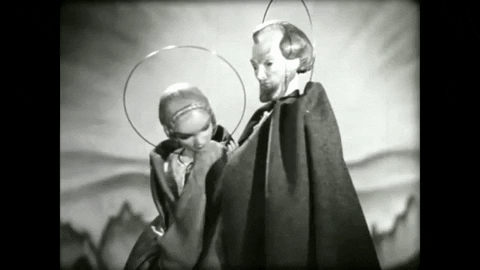
This one is a little different from the other entries on this list as while the film itself in its entiraty is available on YouTube for anyone to view, the information surrounding Legend of Mary, specifically its year of release, remains a mystery as of writing this.
I have mentioned the film before on this blog so I’ll keep it brief here: in summary, Legend of Mary is a short film retelling of the Nativity featuring the Rod puppets of Austrian puppeteer Richard Teschner. the video was uploaded to YouTube by user canada 150 archive. I looked up the people credited in the film and was able to find most of them, but didn’t find Legend of Mary listed in thier credits, and was unable to find the film on sites like IMDB, tMDB or Letterboxd. I reached out to Canada 150 archive asking if they had any info regarding the Legend of Mary’s release date, and after a coupe of months, they replied saying they didn’t know.
And that’s as far as I got on my search for answers, if anyone of you guys has any information regarding Legend of Mary, then it be of huge help in finding the release date.
Sam and friends (1955 - 1961)
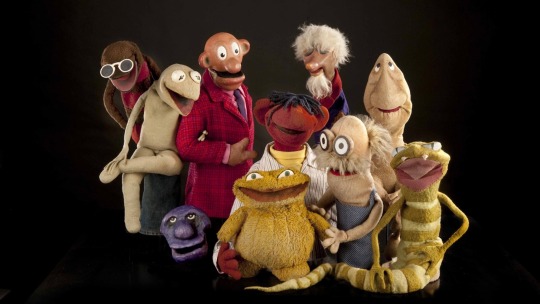
Sam and friends was the very first puppetry television series created by Jim Henson alongside his colabarator and future wife Jane Nebel. filmed in Washington, D.C. and airing twice daily on WRC-TV and the NBC affiliate in Washington, D.C. from May 9, 1955, to December 15, Sam and Friends would mark the first apperence of Kermit (though not yet as a frog) and paved the way for Henson’s iconic and revered legacy in the realm of puppetry on film and television.
With the impact this show had in mind, it may come as a shock to some that almost half of Sam and Friends, specifically, 42 of the 86 episodes, are considered lost. With 16 existing, 8 documented, 9 known from memory, plus 8 existing Esskay commercials and 1 memory-known Esskay commercial. Some taped episodes have been shown at venues such as the museum of the moving image while others have been erased. It’s unknown if copies of these erased episodes still exist.
This post would become far to long if I were too list every episode missing from Sam and Freinds, but if your curious, the lost media wiki article has a comprehensive list of all lost episodes.
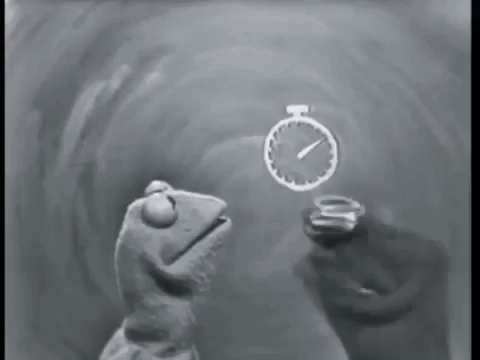
Annnd that about it for this post. This type of content is pretty different from the stuff I usually post. So I’m egar to see what you guys think about it. If you enjoyed this article, want to see more like it or have ideas for what puppetry-related topics I should cover in the future. And again, thank you all so much for helping me reach 55 followers. Your support really does mean a lot to me, and I hope you enjoyed this as a follower milestone gift.
Anyways, hope you enjoyed this dip into lost puppetry, and have a happy holiday season!
#jim henson#sonic the hedgehog#osamu tezuka#lost media#lgbt#puppets#puppetry#richard teschner#lost tv series#failed pilots#failed pilot#lost puppetry#live show#theme parks#amusement parks#puppet show#performance#tv#television#film#short film#1950s#1960s#1990s#2000s
85 notes
·
View notes
Text
Throwback Tuesday
January 12, 2021
Howdy, and welcome back to another Throwback Tuesday!
For this episode, we’ll be diving into the Kirby franchise and looking into the title Kirby: Nightmare in Dream Land! This was suggested to me by my girlfriend who adores this game and I had been wanting to get into the Kirby games for quite a while, so here we are!
May I present
Kirby: Nightmare in Dream Land (2002)

Production History
Original Release: GBA: October 25, 2002 (JPN), December 2, 2002 (USA), September 26, 2003 (EUR)
Future Releases: Wii U Virtual Console: April 30, 2014 (JPN), October 30, 2014 (USA)
Developer: HAL Laboratory
Publisher: Nintendo
Director: Shinichi Shimomura, Masahiro Sakurai
Producer: Hiroaki Suga, Masayoshi Tanimura
Artist(s): Kazuya Konishi, Atsuko Nakamura, Akiko Hayashi
Programmers: Tetsuya Abe, Yoshimi Takahashi, Kouji Mori, Eitaro Nakamura, Takaaki Kawahara, Koji Akaike
Composer: Shogo Sakai, Jun Ishikawa, Hirokazu Ando, Tadashi Ikegami
Inspiration
After releasing Kirby 64: The Crystal Shards for the Nintendo 64 in 2000/2001, the development team HAL Laboratory wanted to shift their focus towards the Game Boy Advance, which was set to be released on March 21, 2001 in Japan (June 11, 2001 in the USA, June 22, 2001 in Europe, June 8, 2004 in China). Having history with the Game Boy series, production was immediately underway to possibly create a launch title for the handheld console. The game ended up becoming a remake of the NES Kirby title Kirby's Adventure. There were a few problems during development with one of the more notable issues was the four-player co-op feature not up to par and according to programmer Eitaro Nakamura, it wasn’t functional until one to two months before their deadline to publish the game. For promotional material, since this was going to be released internationally and needed to have some kind of a consistent design, pulled the logo assets from Kirby: Right Back at Ya!, a newly-released cartoon series that was airing internationally at the same time as the game’s proposed release, and remodeled the logo for the box art across all versions. This logo/title change would eventually impact future releases such as Kirby and the Amazing Mirror and Kirby: Triple Deluxe to name a few.
Story
The story is rather simple: King Dedede steals the Star Rod of Dream Land and the citizens of Dream Land can no longer dream, which is a very big problem. Kirby discovers the issue when he takes a nap and realizes that there are no dreams. When confronting King Dedede about the Star Rod in the Fountain of Dreams, he finds out that Dedede broke them into seven pieces (it’s revealed much later that he does this in order to prevent Nightmare from taking the Star Rod and using its power for evil) and Kirby must find all of the pieces and defeat Nightmare in order to restore the dreams in Dream Land.
Gameplay
The game is a standard platformer title much like the older games in the series where you have to play as Kirby and complete the level using Copy Abilities, which vary based on the level. Copy Abilities are special abilities that supply Kirby with a specific type of Ability (ranging from nature-themed ones like Ice or Burning, to magic-themed ones like Beam or Light) and can come from specific types of monsters or sometimes freely offered in select parts of the game. It plays almost identical to the NES version (Kirby’s Adventure) but with some notable changes including a graphics upgrade because of the Game Boy Advance’s graphical capabilities. Other changes include decreased difficulty, new monsters, and even new hats for most Abilities. This version also has a 4-player multiplayer system, an Extra Mode, three mini-games and Meta Nightmare playthrough, which marks Meta Knight’s debut in the Kirby franchise.
Reception
The game was positively received by critics and fans, who noted that although it was a remake of an older title, that it was a well-done remake, with the graphics, multiplayer and cutesy design being particular highlights of the title. One drawback that critics noted, however, was the decreased difficulty and the “stale” repetitive gameplay toward the latter part of the main game. Despite its shortcomings, it still was best-remembered by fans to this day is seen as one the most favorable Kirby titles to date.
Legacy
The popularity of the game itself was enough to land it in the Wii U Virtual Console in 2014 world-wide. It was and still is one of the best games ever to come out of the Game Boy Advance (which says a lot because there are a lot of them) and was considered a step in a new direction for the series. Meta Knight’s popularity with fans made him a mainstay in later titles and has been seen in almost every Kirby title since.
Thoughts from the Head
So I have never played, nor owned the title, however my girlfriend has and she regards it as one of her favorite games from her childhood (as stated previously, she was the one that suggested the game to me for a Throwback Tuesday post), so if she likes it, and it looks really promising, I would very much like to play it. You can find the GBA game online on eBay for about $15-20 easily to start with (you can not only play it on the Game Boy Advance but if you have an original DS or DS Lite, you can play it that way, too because of backwards compatibility), and if you happen to have the Wii U, you can buy it for $7.99. Now if you have an NES, you technically can get the game Kirby’s Adventure (Hoshi no Kirby in Japan) since it’s essentially the same game but lacking the various modes and graphic upgrade. You can find various copies of it on eBay starting at around $15 roughly and this goes for both the NES and the RF Famicom versions. As far as accessibility goes, this game is one of the more obtainable ones in the series in terms of rarity and value.
In terms of recommendations, it’s definitely worth a shot if you have the means to play it. It’s a very accurate and faithful remake of the NES original and if you’re a Kirby fan, especially take a look!
Don’t have a way to play it, but still wanna check it out? World of Longplays has your back with their full playthrough below!
(The video is from 2011 so the quality is not super sharp)
youtube
#actually on time somewhat#first time covering a Kirby title so that was fun#speaking of Kirby I kinda wanna cover Kirby lost media for a Friday Special at some point because apparently there is a LOT of it#my voice!#throwback tuesday#retro gaming#gaming#irl#kirby#kirby nightmare in dream land
11 notes
·
View notes
Text
Submarine (2011): An Essay
Before we actually get into the essay, I’d like to apologise for the delay in uploading this post. School started up again this week and it’s hit hard, so I’ve been less motivated to write, but now I’m back into the swing of things it’ll be a lot easier to keep up. Now, without further ado, I present my essay on Submarine (2011) directed by Richard Ayoade, my favourite film of all time.
Submarine is a film directed by Richard Ayoade, starring Craig Roberts and Yasmin Paige. It is a teen coming of age film which was a hit on independent circuits when it was released. Since then it’s become a cult classic for a lot of teenagers around the world.
Personally, I like Submarine because of its sarcastic, self-aware comedy style. The deadpan humour makes darker parts of the story, such as the marital problems between Oliver Tate’s (Craig Robert) parents, seem as funny and as light-hearted as the opening letter from Oliver to the audience. I also find that the romantic plotline between Oliver and Jordana (Yasmin Paige) was well done and very realistic considering the age of the two main characters. It provided some warmth to a film that could have ended up very differently without it.
My favourite scene in Submarine is the final scene in the film. Oliver and Jordana are shown slowly walking into the water with each other, taking a few steps at a time. After a darker final third of the film, this shows a resolution- the two main characters have made up and are friends again. There is absolutely no dialogue in this scene, which shows the emerging depth of their relationship, and shows that they’re perfect for each other as they know exactly what the other is thinking. Overall, this scene is quite a nice conclusion to everything that happened before it, without losing the quirkiness that was established at the start of the film.
Submarine is a teen coming of age film, and I believe it is a very good example of the genre. It’s quirky, which is something that has been necessary for the genre since Juno was released and became a big hit. However, it’s an intelligent film which is better for young adults because it remains relatable for them too. It is almost a collection of the conventions of the genre, except that it requires a bit more deeper thought and some of the references are to things that very young teenagers won’t fully understand.
Craig Roberts has the longest and most impressive list of film credits, including films such as 22 Jump Street and a role in Skins. However, my favourite role of his other than his role as Oliver Tate is the leading role of Trevor in the 2016 Netflix film The Fundamentals of Caring. The Fundamentals of Caring is like Submarine in that it puts humour into a dark situation and includes a romantic side plot.
The most successful element of Submarine by far is the non-diegetic soundtrack. Alex Turner of the Arctic Monkeys wrote and recorded 5 songs which are all in the same vein as the film; wistful sounding and mellow. The lyrics are also quite tongue in cheek, matching the dialogue in the film. Another successful element of Submarine is the cinematography. The mix of cinematic shots of sunsets and the shaky, handheld camera shots used for the more intimate and personal moments of the film both help convey the atmosphere at the time. Finally, the location of the filming (Wales) provided a scenic backdrop that could also help fit the ‘small town’ aesthetic that the film needed to be relatable to a lot of its audience.
The only thing that could be improved about Submarine is the use of voiceover. It was used well and showed the narrative for people who weren’t fully following the story. However, I feel like it could have been used to more of an extent, to provide an insight into Oliver’s mind. His emotions were never fully explored and while this fits the mould of the introverted, socially anxious character he is built up to be, it would be nice to get more of an insight into his reactions.
Overall, Submarine is a fantastic film, packed with fun and emotional moments. It will warm your heart, and make you cry, all within the same scene.
4 notes
·
View notes
Note
WHAT!?
Mario & Luigi: Bowser's Inside Story[a] is a role-playing video game, developed by AlphaDream and published by Nintendo for the Nintendo DS handheld game console in 2009. It is the third game in the Mario & Luigi role-playing series. It uses the interactive screens of the DS in some of its gameplay mechanics while also introducing several elements that would be used in the series' future gameplay.
The game's plot involves Mario and Luigi being inhaled into the body of their long-time nemesis, Bowser. The Mario brothers learn to help Bowser, who is unaware of their presence inside his body, to combat their mutual enemy Fawful, who has taken over the Mushroom Kingdom. The gameplay focuses on the trio's cooperation, with specific abilities to solve puzzles and fight enemies. Similar to its predecessors, its role-playing style emphasizes a turn-based battle system focused on timing accuracy, and it is almost entirely comedic in nature.
The game was both critically and commercially successful, with many fans and critics considering it to be the best game in the series. It is the second best-selling Mario role-playing game, with more than four million copies sold worldwide by April 2011.[2]
A sequel, titled Mario & Luigi: Dream Team, was released for the Nintendo 3DS on July 12, 2013. A remake for the Nintendo 3DS, titled Mario & Luigi: Bowser's Inside Story + Bowser Jr.'s Journey, was released in Japan on December 27, 2018, in North America on January 11, 2019, in Europe on January 25, 2019, and in Australia on January 26, 2019.
1 note
·
View note
Text
My 3DS - 2013-2022
I've officially retired Nintendo's handheld device, the last trueborn descendant of the legacy of the Game Boy (those 2DS models are bastard children). It happens to equal the time of what it did replace being the original DS (2004-2013) and in many ways it both underperformed and overperformed.
It had a good run. Now it's a curiosity rather than an activity.
Below is a history of the device along with games, in the year I played them in, I have either completed to the credits or completed in another sense - some even going as close to 100% completion as you can imagine. None of these experiences were fairweather first impressions. I played them to the end.
Part 1 - The Early Years Vs the PSVita (2011-2013)
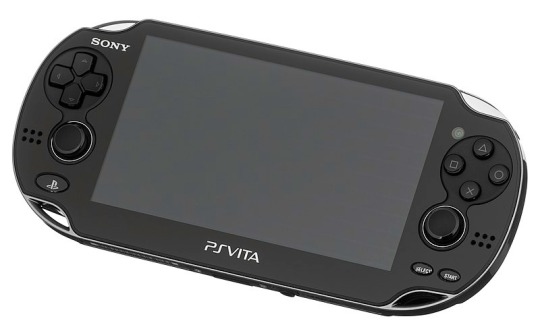
Let's be very clear about one thing - the PlayStation Vita was a serious contender and a bitter pill for Sony to swallow when it eventually lost out to the 3DS. Unlike the PSP Vs DS, this was not as surefire in terms of quality or support. The PS Vita was an incredible achievement in handheld hardware with its OLED screen and innovative buttons and touch-screen immersion. A powerful camera, a great library of games, and the potential to play on TVs and interact with other PlayStation models plus your PS+ subscription included games for the PS Vita making it a good investment. It should of won...except Sony felt it was a good idea to make everything proprietary. The memory cards, the charger, the firmware, all because Sony was petrified of people hacking the device. In building a fence of security so high to prevent unwanted users it alienated genuine interest. In many ways what killed the PS Vita wasn't the 3DS but the PS Vita. It had the chance to defeat Nintendo once again as it had before but its arrogance for finances and paranoia in its playerbase were its undoing. By contrast, the 3DS didn't start out very tempting as it was the first major released piece of hardware by Nintendo where it did NOT launch with a Mario title (and, you'll see, I never got a Mario game unless you want to count SSB as one) and the aging DS was still a better option. In 2012 they did correct some of the issues, namely the size and emphasis of the '3D' part, with the XL models. However it wasn't until 2013 they finally had killer-apps to support its purchase - namely Pokemon X/Y, The Legend of Zelda: A Link Between Worlds, and Fire Emblem Awakening. Were they the most original choices compared to the PS Vita? No however they were safe bets and spoke of a longer support in a market where Nintendo could offer a platform to third parties far greater than their rival. Oh and being backwards compatible to the DS games helped. I waited those two years as the war between the two waged until finally pulling the trigger. It turns out I had made the right choice.
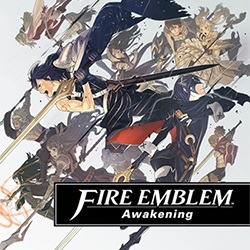
2013 - Fire Emblem Awakening - Here's where it all began - the personal reason why the PS Vita lost out and why I decided to buy the 3DS. In a way it's the perfect marriage - the 3DS was made better because of Awakening and because of the 3DS the Fire Emblem series revived with new life. They completed each other in their validation to exist. Awakening was so densely packed with character interactions you'd almost think it wasn't a Strategy RPG at all and more of a life-sim playing out the interests of your various party members. It is a good game with many choices and a must play for anyone owning a 3DS. Just try to avoid getting a runny nose...

2013 - Kid Icarus Uprising - A lot of people seem to detest how this game turns your hand into an impression of a crab. Okay consider this for a moment - I'm left-handed. So I'm double-screwed yes? Wrong. See I went to the options and I tested out some configurations first. I made it so I didn't have to endlessly tilt the screen or curve my hands. It was still a tiring experience after 30 minutes so had to settle for doing maybe 1 or 2 missions a day before putting it down. The missions can be long. However if you can get around its reputation this is such a great experience. I wish this was not locked to the 3DS after 10 years. This franchise truly deserves better.
Part 2 - The Glory Years (2014-2017)
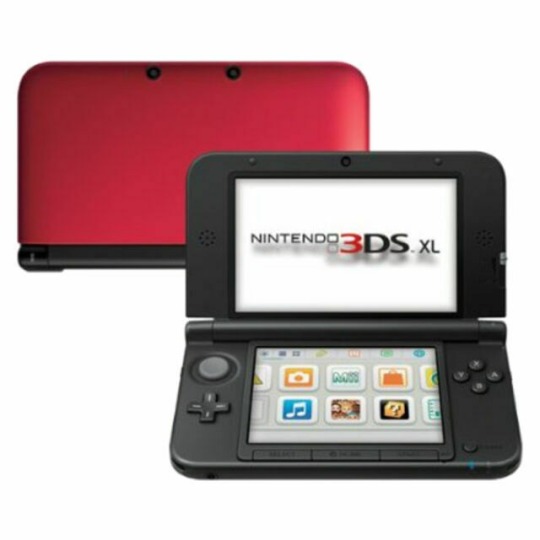
Now uncontested and the phone markets unable to match the quality, the Nintendo 3DS became responsible for also picking up the slack of the poorly designed Wii U and Iwata's legacy. What is there to say? Its library was immense. I have so many games I did not touch from Bravely Default to Yokai Watch, Tomodachi Life to Luigi's Mansion: Dark Moon, Kirby: Planet Robobot to the newer Professor Layton and Phoenix Wright games. Then of course are the other 1st party IPs. I need not bore you with those too. The portability made it also an indie-game dream. The 3DS would remain a fixture for the last decade because it was uncontested - nothing could match its appeal in the market so focused elsewhere with consoles, PC, and other avenues like VR or streaming. It had gone from a risky endeavour to a global phenomenon. The prince of a heavy crown became a worthy king.
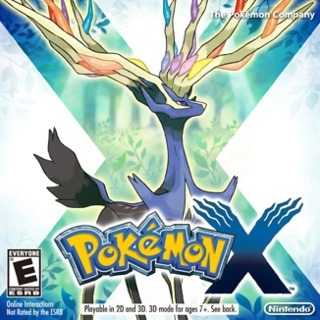
2013/2014 - Pokemon X - Did I mention the 3DS was backwards compatible? I decided to go on a long journey of getting every Pokemon I had got from the Gen 3 era and moving it into Gen 4, to Gen 5, and finally here into Gen 6. I had a LOT of Pokemon how many? Probably over 600, maybe closer to 700. The entire Pokedex was just over 700 anyways so this felt like the most complete Pokedex I've ever had completed in any Pokemon game. Given this achievement I felt for the next Gen, Gen 7, I should start fresh with a new mindset...

2013/2014 - The Legend of Zelda: A Link Between Worlds - A Link to the Past is my all-time favourite Zelda game. It's classic adventure done right and a killer-app of the SNES. To make a sequel to this game, not Link's Awakening, but a true return to this Hyrule, this nostalgia, and then introduce new mechanics, quality of life upgrades, and overall labor of love from fans of the original to be the developers of this one, made it all the more appealing. This game is very underrated because I think people felt Ocarina of Time 3D and Triforce Heroes gave them particular impressions this wasn't as necessary or required but man I would choose this any day.
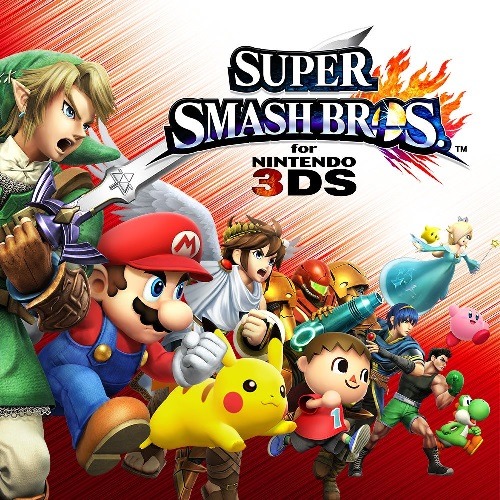
2014 - Super Smash Bros for 3DS - Wonky title aside, this was where I mained Lucina for a bit! Felt correct after the Awakening appeal. Not much else to say - of all games this was more the 'timewaster' versus dedicated to a cause.

2015 - SMTIV - I was the right person to play this game! I had never touched any Shin Megami Tensei games up until this point so the samurai setting, the overworld, its descent into the evil caverns, well none could prepare me for the genuine shock later on. I won't spoil it if you're not familiar with the series either but this is precisely why it's a great starting point. Even if you are a returning fan though it's still highly enjoyable. What I would come to learn however is the spin-off SMT Persona franchise would supercede its original series just as SMT had surpassed its book origins. What a weird franchise.

2016 - Resident Evil Revelations, Liberation Maiden, Gunman Clive 1 + 2, and 10-in-1 Arcade Collection - All of these were downloaded titles, like SMTIV, though only the latter 4 remain on my 3DS today. RE: Revelations is a triumph of showcasing the 3DS DOES have some power to it. Nothing felt lacking in frames or lagged whilst everything felt smooth enough to control. The graphics were just condensed enough not to become messes and honestly can't believe how impressive this all looks and plays throughout. Not the best of the series of course but for a handheld game? A classic. As for Liberation Maiden? I think it's a decent shooter and will usually try to support Suda51's projects. Gunman Clive oh man these games...they appear very basic platforming but the appeal is strong for such a budget title. It punches up much like the 3DS does as a device. Play them. 10-in-1 is really just me timewasting once again. Remember - handheld means portable means play for a small amount. I think people have forgotten a lot of games are made to be played for short durations not become life experiences. Speaking of which...
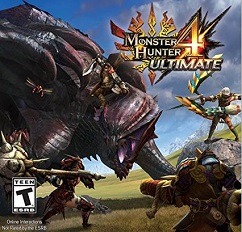
2016 - Monster Hunter 4 Ultimate - 400 hours. A rite of passage, this game was where I wholly embraced the appeal of the 3DS whilst, upon reflection, seeing just how limited it really was. The screen size and 240p resolution with the awkward inputs should of made such a daunting adventure untennable and yet without my playing of this I would not have gone onto Monster Hunter World which is documented on my twitter page from the start of 2018 to the end of 2020 (see the tallied monster hunted here on https://dreadwhoop.tumblr.com/post/640340823013277696/final-tally-large-monsters-hunted-in-monster and https://dreadwhoop.tumblr.com/post/640341124128669696/final-tally-large-monsters-hunted-in-monster if you like). It's all connected. The most important thing to remember - I soloed EVERYTHING, learnt it all without any help, and would of been capable of soloing Gogmazios too had it not been for the timer. I still beat it once going online of course.

2016/2017 - Pokemon Moon - Not something I am particularly fond of remembering because I documented me playing this game under a ruleset called "Super Torment" as a means of surpassing Nuzlocke Mode. I succeeded but felt it was too insidious to appeal to the masses. If you want to read my suffering please start at https://dreadwhoop.tumblr.com/post/155884160008/super-torment-mode-diary-prologue-day-1-recap
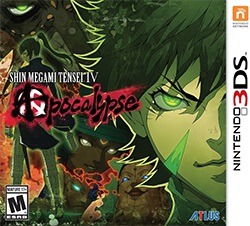
2017 - SMTIVA - You can find my review of this here https://dreadwhoop.tumblr.com/post/164496947038/how-about-another-review-shin-megami-tensei-iv

I will always love you Danu & Nozomi.
Part 3 - The Latter Years (2018-2022)
Everything from this point I will talk about in terms of games played didn't come out until after the start of 2017. Many have considered the 3DS's demise over a number of years - the 2017 launch of the Switch, the eShop's impending discontinuation, and other factors like Mobile Phones being now more powerful, VR and streaming becoming more realised and popular, and the Battle Royale genre becoming a major grab for large and new audiences...but it's for me the Steam Deck which signalled the final death knell.
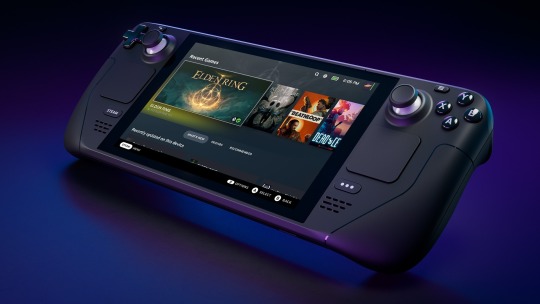
The Steam Deck is, and will forever be, a superior choice to the 3DS. Is it more expensive? Of course! But going back to the early days, Nintendo needed to price drop and cost cut to ensure the 3DS's success. The success of the Steam Deck doesn't require such things because you have choices and, more importantly, it is able to tap into those markets Nintendo simply cannot. The 3DS lacks the power to compete in today's market and yet it's still the best option if you are strapped for cash. What was once an underdog story with a happy end, the 3DS is now part of a bygone age we may never see again if people continue to embrace current trends.

The future of Nintendo is in the Switch but what then? The OLED Switch is just a plaster on a very real bleeding out of a company who no longer seem capable of sustaining against financial titans like Microsoft or even investor groups like Tencent. Is it even possible Nintendo can innovate long enough to outlast even Sony? Possibly. All I can say is, as a Switch owner, I want them to succeed with innovation rather than having to sell out or be bought out. Maybe the time has come for them to consider a GameBoy Classic.

2018 - Ultra Sun - The ironic thing is, despite 3/4 of this game being a literal rehash of the original Sun/Moon games, I was in a unique position to enjoy it fresh. Not just because this time I didn't have to subject myself to stupid 'hard mode' rules but also because where I was at the time had no PC or Console access so this meant the convenience of its size and mobility meant I could enjoy this completely. I got to say the last 1/4 is very good to get to so for fans who never picked up the original Gen 7 releases this is a must.
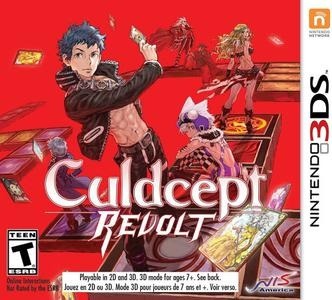
2020 - Culdcept Revolt - After playing Super Smash Bros Ultimate I saw these characters represented from a series and thought 'huh this game feels obscure' and, whilst my 3DS was beginning to gather dust, I felt acquiring this game wouldn't be too difficult and was in fact cheap. What's it about? Well it's sort of classic fantasy with monsters but you go around a 'monopoly' board or some configuration of a track and as you land on spots you prop up those creatures. Honestly beyond this I want to say it gets really deep with details and the depth shocked me as did the OVERWHELMING ABOUT OF HOURS. Seriously you will underestimate just how tricky, puzzling, and overall rewarding it is to immerse in an obscure card game like this. A really strange result for me. Won't go back but glad I played it to the end. Wish I had got the book though! Yes I completed the universe. Yes I know who Pamela is.
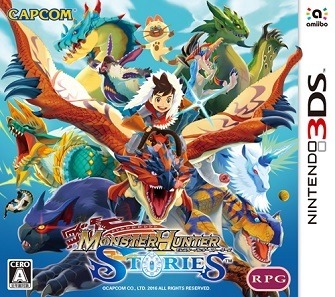
2021 - Monster Hunter Stories - After my long experience with MHW, I opted not to play Rise in favor of this - and I felt happy by the choice. Rock-paper-scissors mechanic aside, it really was about time a game made the monsters themselves playable instead of just the hunters. I hope future mainline MH titles include this feature. A lot of classic monsters here. It felt refreshing.
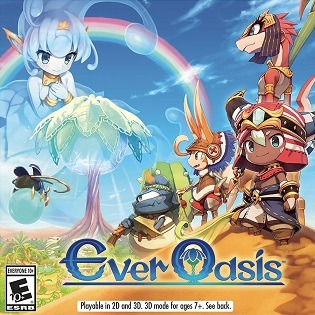
2022 - Ever Oasis - Our swan song experience. If you think this game is just another management game like Animal Crossing mixed with Zelda elements then I fear you've misidentified this game. It is a game where you build an Oasis, gain residents, go out on adventures to get materials for your residents to make shops, maintain their inventory, and sell so you can then buy better investments whilst their happiness directly ties to your health but also they can also adventure with you along with other races specialised for such a task - some residents having unique abilities you need to progress or find the majority of content. As you grow your Oasis you get a large garden, expeditions, visual changes to the presentation of your Oasis, all whilst a story is happening to level you up, craft better items, and enjoy the 3D world connected from your Oasis to the far corners. The post-game was...rough, admittedly, but the festivals and my sister's joy seeing every Bloom Booth maxed out, every decoration, every road, and every recreational building, meant I could say this was one of the best ever made. Oh and I got the Goddess Factum Relic.
Part 4 - The Future
As I write this now, in August 2022, my 3DS has aged more than just from a historical standpoint - it is literally worn out and whilst these issues didn't impact the majority of the games I played by 2021 the signs were showing and for Ever Oasis all of the ones below existed hence why it may well be my last 3DS game. Here are the issues:
* The piece in front of the right trigger has lost the outer casing and, whilst it was glued back on once, its fully gone now. This means the 'R' button is limited and sometimes gets 'stiff' which means it doesn't register inputs. * The charger's wire port got corroded so it meant having to buy one outside of the included boxed one. Weird issue but there you go. Thankfully the actual port on the 3DS remains safe. * The battery has become semi-inert as in it only remains charged from full to depleted within around 20 minutes. This means I have to have it plugged in at all times to use it properly. * The analogue stick has become prone to lift off its base and stick to your left thumb upon consisent use. Not a huge issue - just plop it back on its base - but it's still a minor issue especially if you need to do some vital roll or something in a sequence. * The stylus pen...is still there! Yep I never lost it but I should probably mention it never got much use because later games tended to see it as a relic. Same with the '3D' features. See battery usage as to if I'd even risk turning it on so the actual 3DS's main selling factor is now redundant. * Finally, as if all those issues still seem managable, the touch screen's markings are starting to show up a little more than I want. The screen is still fine but it's definately been tapped a lot.
It's been loved.
In conclusion, the 3DS gave me a lot of wonderful memories. I can't really say this is the end because part of me may one day pick up one of those 3DS titles I never got to play and maybe give the thing one more shot at life. However, as it is with many things, one has to learn moving on means letting go and I want to embrace the new. I think in a world where the life of games are uncertain I'm happy I've still got this library of games so, even if they aren't new, they're still fun.

The games are fun.
0 notes
Text
A Eulogy for the PlayStation Vita

I was in middle school when the original PSP came out. leading up to the launch of the PSP the narrative among the students of my middle school was that the PSP was cool, for adults, and will be their all in one media player (this was pre-smartphones) and that the Nintendo DS was for children. I never subscribed to this way of thinking and somehow convinced my mother to get me both consoles. The PSP while a respectable console that sold 80million units and had a decent library still couldn't hold a candle to Nintendo’s 3DS. After watching my PSP collect dust on a shelf for several years I was pretty disillusioned by the promise of experience console gaming on a handheld.
When Sony announced the PlayStation Vita in 2011 I was much older and wiser and felt like I could see what would surely be a failure of a handheld. Two years and an obsession with Persona later and I am hunting for Vitas on eBay, landing a lightly used one for a little over 100 dollars. There are a few ways in which the Vita shines bear mentioning, after all, there is a reason why people are so sad to see it go but there's also a reason why no ones surprised that it's going. The most apparent positive aspect of the Vita is the hardware, it is sleek, heavy, and feels like a powerful machine, which i is, the Vita is capable of some amazing graphics the likes of which I thought were impossible on a handheld console. What really got me to buy a Vita though was its ability to play old PlayStation 1, PSP, and digital indie games on the go, which sadly also doesn't take advantage of the consoles power seeing as most of these games are 2D. That being said you can play Personas 1-4 on the Vita which makes it a pretty amazing console in my eyes.
No one was surprised when Sony announced in May 2018 that they would stop manufacturing physical games for the Vita, I had read articles and seen videos predicting this would happen as far back as 2014. I even think the reason they announced this before E3 was so that we wouldn't have another E3 where we wondered if they would even mention the Vita, they got ahead of it the answer is; no, never. The Vitas shortcomings are remarkably similar to that of the PSP which makes you wonder why Sony didn't learn their lesson from the PSP. That lesson obviously being that no one wants to pay an exorbitant amount of money for your proprietary memory card for really no reason at all other than greed. Honestly, people know how much digital memory should cost, we all see the price differences between your product and Sandisk micro SD cards which to the consumer are functionally the same. This decision really handicaps your console and keeps people from wanting to build a collection of games on your platform, especially considering how many download-only indie titles were released for the console.

At the end of it, all the PlayStation Vita died a death of a million cuts and was the victim of the death spiral that comes with not having enough games come out for your console. There are no games on it so no one buys it so developers don't support it so fewer people buy it and so on until it spirals out of control. The Wii U and Neo Geo saw a similar demise and I hope first parties have really learned that software trumps hardware every time. The PlayStation Vita will be missed but most games worth playing on it came out before the Vita itself, so hop on eBay, I am sure now is a great time to purchase one, may it live one.
#sony#playstat#vita#playstation Vita#e3#e3 2018#vita discontinued#video games#video gmaes news#video game reviews#god of war#neo geo#handheld#nintendo#nintendo DS
1 note
·
View note
Text
Minecraft Pocket Edition App Apk Download
Minecraft Pocket Edition is an android version of the most famous video game of the world. Minecraft is a game played by a wide range of people worldwide as it gives players opportunities to design and showcase their abilities on a widely popular platform.
You can play the game on many different platforms, including android, for which we have provided you with the apk file in this article. Minecraft can also be played in multiplayer mode and is still famous among gamers after a long run. This game can be considered an open platform as there are many open-source levels available for the game.
Now I will not waste your time explaining and stuff, and you can download the apk file you are looking for from the link provided below.
Download Minecraft APK

You can download the latest apk download mine craft
The way of playing, the sounds, the textures, and much more are very similar or almost identical to the Minecraft Java Edition. Within a three-dimensional world, the player can break down and place blocks, fight against opponents, and much more. The Minecraft Pocket Edition offers three instead of five game modes: Survival, Creative, and the Adventure mode. Not available are the hardcore and observer mode. Furthermore, several game elements of the Java Edition are not available in the Minecraft Pocket Edition, including the drive lore and the cooldown. Also, the Pocket Edition family contains a few game elements that are not available in the Minecraft Java Edition or other game editions.
The Pocket Edition was created and developed by Mojang AB. The version for Windows phone devices was developed by Microsoft in 2014. After Mojang was sold to Microsoft at the end of 2014, Microsoft developed a Windows 10 Edition based on the Pocket Edition. Both editions contain the same code.
Minecraft free download
Minecraft mod apk of pocket version comes with many exciting tips. It is entirely free to play Minecraft, and you have not to pay a single penny.
What is Minecraft Pocket Edition
The Standard Pocket Edition was created by Mojang AB and is being further developed by them. It was first shown at E3 (Electronic Entertainment Expo) on a Sony Xperia PLAY and was released on August 16, 2011. A few weeks later, versions for other Android and iOS devices followed. In 2014 versions for Fire TV and Windows Phone were added.
Minecraft apk is an android version of a very famous video game Minecraft that is recognized worldwide. You can install Minecraft apk on any android device.
The provided APK above is the pocket edition, which is actually not free, but when downloading the apk file from us, you get it for free.
The Android app „Minecraft Pocket Edition“ (Minecraft PE) brings the well-known computer game to your Android device.
The game classic Minecraft is now available as „Minecraft Pocket Edition“ for your Android smartphone.
Like the PC version, the mobile Minecraft world also features monsters, animal villages, and caves. You can explore the landscapes together with friends via WLAN.
Minecraft Pocket Edition: Popular computer game also on Android
The infinite worlds of the Minecraft Pocket Edition can be explored in different ways. You can choose between Creative Mode with unlimited resources and Survival Mode. In the latter, you start with nothing and build your empire piece by piece. You will have to produce essential weapons and tools to be armed against various dangers and creatures.
What is Minecraft?
You Have The World In Your Hand Prepare yourself for an adventure with countless possibilities as you build, work in the mine, fight mobs, and explore the ever-changing Minecraft landscape.
Whatever you dream of, you can build it in Minecraft. Let your imagination and unlimited resources run wild in Creative Mode.
Minecraft is a phenomenon of recent game history. It was released in 2009 and has sold over 100 million copies. When Swedish programmer Markus „Notch“ Persson published the game in a small forum, he hardly suspected it would make him a billionaire five years later.
In 2014, his company Mojang was bought by Microsoft for an incredible 2.5 billion dollars. Minecraft exists for desktop computers, consoles, and handheld devices and has over 40 million players per month. Most of them are children and teenagers.
Minecraft, initially developed by Mojang and later purchased by Microsoft. You can explore endless scenarios, experience all kinds of adventures, and build as you please with the available blocks and resources.
Minecraft Bedrock
Bedrock Edition refers to the officially „Minecraft“ versions of the game, enabling cross-platform play between mobile devices, consoles, and PCs.
Technically, it has its origin in the Pocket Edition on mobile devices and/or its offshoots for Windows 10 (Windows 10 Edition), Gear VR (Gear VR Edition), and Fire TV (Fire TV Edition) and represents a merger of these.
What Is Bedrock Minecraft
Starting with the Xbox One! The Bedrock Edition was ported to consoles, where it replaces the original console edition for each console (Xbox One Edition, Nintendo Switch Edition, and PlayStation 4 Edition).
The Pi Edition, the Apple TV Edition, and the New Nintendo 3DS Edition are also offshoots of the Bedrock Edition. But the development of these offshoots has been discontinued, so there has been no unification with other versions.
Minecraft Ps4 Bedrock
On December 10, 2019, the Bedrock Edition was ported to the PlayStation 4. It is the only Minecraft Edition, besides the Java Edition, that is actively developed further.
On July 8, 2020, the discontinuation of the Bedrock Edition for devices with Windows 10 Mobile, the Gear VR, and weaker Android devices was announced. In October 2020, the Bedrock Edition discontinuation for iPhones / iPads with iOS 10 or older was announced.
The Bedrock Edition offshoots for PlayStation 4 and Xbox One are also backward compatible with PlayStation 5 and Xbox Series X|S. Still, they are not separate offshoots adapted to the new consoles. The new hardware is not fully utilized, and some features may not be available.
What to build in Minecraft?
It is what is usually called a sandbox game. There is no other concrete goal than to survive while wandering through an endless world and building and destroying objects with the available blocks (stone, grass, iron, granite, etc.).
The worlds of this game are generated randomly. Every world is unique. There are no equal worlds which guarantee a completely new adventure. Every team starts a new game.
The pixel graphics is one of the most distinctive aspects of this game, to such an extent that every game that is started afterward with the same retro graphics is often defined as a Minecraft-inspired game. And there are many of them because due to the massive success after the launch in 2011. Dozens of clones seemed to try to gain so much popularity.
What is Minecraft About?
Minecraft plays in an open world and resembles a virtual Lego game. Blocks of different materials can be mined and placed in other places. The landscape consists of different zones – from jungle to ice landscape. Alien beings – friendly and enemies populate the world.
The spectrum ranges from humans and spiders to skeletons and other monsters. Monsters can be found at night or in dark places like caves. All figures also consist of block-like structures.
Besides the main world, there are two fantasy worlds: The Nether and The End. The Nether is a hell-like dimension. The End is the end level, where you have to defeat a mighty dragon. Both worlds are accessible through portals in the main world.
How is Minecraft played?
There are four game modes in Minecraft: Survival, Creative, Adventure, and Spectator.
Survival mode is the „classic“ way to play the game. You have a health bar and a hunger bar, which go back if you are attacked or don’t eat anything. You can create things and trade with mined resources. From armor to tools – the possibilities are enormous. The game is played on different difficulty levels, whereby no monsters appear on the lowest one, and the player never goes hungry.
In Creative Mode, you have inexhaustible resources, and you can fly through the world. This mode is comparable to a gigantic Lego playground. There are no limits to creativity. Millions of elaborate works on the Internet are proof of this.
The Adventure Mode was invented to experience the maps created by users. In adventure mode, you are exposed to the restrictions of the respective map creator.
If you are more passive, choose the Spectator Mode. Here you can observe the whole world and the events as a spectator without having any influence. For example, you can also take the perspective of monsters.
You control the game with the mouse or the joypad – just like in most role-playing or strategy games. The key assignment can be modified.
How Many People Play Minecraft?
The majority of the mentioned millions of players are between 15 and 21 years old. About 80 percent of the players are male.
The reasonably broad mix of the players is probably what makes the game so appealing. Almost generations come together to build and experience gigantic fantasy worlds together at Minecraft. The multiplayer mode works online and also in the local network.
Is Minecraft for kids?
Minecraft age rating
The official age rating is Pegi 7. For some story versions Pegi 12. The game is very harmless, not least because of the very rudimentary graphics. Apart from the almost cute monsters, there are few scary moments. Minecraft is even used in schools (as part of the MinecraftEdu edition), which was developed especially for school environments).
Multiplayer on Minecraft
Multiplayer mode is the server-based version of Minecraft, which, as the name suggests, allows multiple players to play together on one world. Players can build buildings or fight with other players, for example.
A server provides a Minecraft world that players connect over the www with their clients. There are large servers that are designed for several hundred players.
As an alternative, Mojang offers the Minecraft Realms servers. Or you can download the official Minecraft server from Mojang and start it to play with your friends.
Different game modes can be distributed on a server, which allows some players to be in a different game mode than others. Players can also be appointed as operators, which gives them access to some commands, such as setting the time or teleporting players.

Minecraft Server
Minecraft how to play with friends in LAN
If you want to play within a local area network (LAN) with friends or siblings in the same house – you can do so without an internet connection because you can publish a single player world in a LAN.
You set up a „Dedicated Server“ that runs day and night and where you and your friends can join at any time. To do this, download the Minecraft Server .jar file and start it first. You accept the EULA by setting the value at the bottom of the Euler file created by the server from „false“ to „true.“ Restart the server he should run properly.
If you want to play Minecraft with someone else in the same network, start Minecraft as usual. Create a new world or load a score. Now press Escape and then twice on „Open to Lan.“ The game now gets a port, which is shown in the chat window. It is now accessible in the local network.
Another possibility is to use an external Minecraft public server. There may be costs for the server, which you can share with your friends. Depending on the provider, these costs vary, but you will receive support if there are problems with the server.
What is smite in Minecraft?
Smite is a Minecraft enchantment. Smite-Enchantment is one of many that players can use to their advantage in Minecraft. Of course, like many Enchantments in Minecraft, it’s not clear precisely what it does.
What does smite do in Minecraft?
Smite is an enchantment that can be placed on any sword or ax. Once this is the case, the damage inflicted on undead mobs increases. With each level you increase the Smiting Enchantment, you add 2.5 damage to undead mobs with each hit. The highest enchantment level of Smite is level 5.
Minecraft Enchanting
As always, with an enchantment, it’s all about a little RNG luck. You must set up your enchantment table and place the sword or ax you wish to enchant and a lapizlazuli on top of it. If you already have a book with the Smite-enchantment, you can easily enchant your weapon with it.
seen on bjb.io
https://ift.tt/2L2g3hV from BJB.io https://ift.tt/3lMnTsL
0 notes
Text
The Collection on Switch Finally Makes Good on the Franchise’s Promise to Appear on a Handheld
June 5, 2020 3:02 PM EST
While the dreams of BioShock for Vita have long been dead, the full series is now playable on the Switch in a remastered collection that is quite well-done.
All the way back in 2011, Ken Levine, the creative director of what was then Irrational Games, announced that a new installment in the BioShock series was being planned for Sony’s PlayStation Vita platform. At the time, much wasn’t known about the project, but the thought of seeing the critically-acclaimed shooter franchise come to a handheld platform in some manner was exciting for a multitude of reasons.
Unfortunately, as we all now well know, BioShock for Vita never saw the light of day and was canceled due to what seemed to be a lack of an agreement between Sony and 2K Games. Even though this planned title wasn’t going to be your typical BioShock experience and was instead set to be a turn-based tactics game, the falling through of this Vita iteration closed the door on bringing the series to a dedicated portable platform.
Nearly a decade later and the BioShock series has now at long last come to a handheld via the Nintendo Switch. While what we’ve been given isn’t anything altogether new like the Vita game would have been, all three mainline BioShock titles make for wonderful additions to the larger Switch library and each has the benefit of being a solid port to boot.
youtube
BioShock: The Collection on Switch is identical to the package that released on PS4 and Xbox One back in 2016. All three entries — BioShock, BioShock 2, and BioShock Infinite — can be found in this bundle along with each respective game’s accompanying DLC. The overall collection remains solid and has enough content to keep you busy for quite awhile, if you choose to play all of it.
Of course, the real question with this version of the game though is, “How does it run and perform on the Switch?” Perhaps unsurprisingly, all three games play and look relatively great on the platform. This isn’t a major shock considering the roots of all three titles were from the last generation, meaning that they have more easily been ported to the console compared to games from the current generation.
Visually, each BioShock game retains the iconic feel and look of its given locations without having to sacrifice too much on the graphical front. The eerie, dark corridors of Rapture from BioShock and BioShock 2 are still haunting to explore, while BioShock Infinite’s Columbia still makes for one of the more breathtaking and unique locales ever seen in any video game. The only noticeable difference, other than a general dip in the resolution compared to other versions of BioShock: The Collection, comes in the way of the textures being a bit less defined. Character models don’t look as sharp as normal and getting too close to walls and other objects in each game prove that they’re a bit muddied. In the end, though, this isn’t too much of a problem and didn’t lead to any unenjoyment while playing.

On the performance front, I noticed no dips in frame rate in all three games, even once combat situations ramp up a bit. This stayed true in both handheld and docked modes, which was definitely a big positive. Performance seems to be one of the areas that a lot of games go back and forth on with the Switch, even when it comes to first-party games from Nintendo. For it to be largely great here with BioShock: The Collection on the Switch made me realize how good of a job that Virtuos did with this port.
Strangely enough, the only time I really saw any hitching or frame rate problems came during the hacking portions of the original BioShock. I’m not sure what it is under the hood that would make these pipe-making puzzles cause the game to slow down, but this was one of the only instances that I saw any particular problems.
One of the things that I also noticed was a bit odd came in the way of the options presented in each game. From what I examined, all three BioShock games largely have identical settings, except for one minor change in the original title. The first BioShock has the option for an expanded FOV, meaning that your peripheral view can be widened if need be. This is something that was true in other versions of BioShock: The Collection on PS4 and Xbox One, too, but I always wondered why it was never added to BioShock 2 or Infinite. It still remains an odd thing to me here as I revisit this package.

I also have to just say that in a general sense, I still cannot get down with shooters on the Switch. I might very well be alone in this, but I find the Joy-Cons to be so uncomfortable when it comes to playing shooters for extended periods of time. I got way more enjoyment out of BioShock: The Collection once I switched (pun intended) to my Pro Controller and began playing either on my TV or via my Switch with it sitting upright thanks to the kickstand. All in all, if you like the Joy-Cons, then more power to you. I wish I liked them more with first-person games.
If you’re a big-time BioShock fan who is looking to revisit the series for the umpteenth time like myself or you’re primarily a Nintendo console owner who has never had access to these games, BioShock: The Collection on Switch is well worth your time. While it obviously can’t match up to The Collection’s counterparts on other current-gen platforms, the work that Virtuous has put into this Switch port has proven to be quite exceptional. At the very least, hopefully this re-release can help satiate the appetite that many have for a new installment in the series, which 2K Games is actively developing right now.
June 5, 2020 3:02 PM EST
from EnterGamingXP https://entergamingxp.com/2020/06/the-collection-on-switch-finally-makes-good-on-the-franchises-promise-to-appear-on-a-handheld/?utm_source=rss&utm_medium=rss&utm_campaign=the-collection-on-switch-finally-makes-good-on-the-franchises-promise-to-appear-on-a-handheld
0 notes
Text
3 Ways Twitter Ruined My Download Gta 5 Android Without Me Noticing
GTA5-Mods. com.
What should I know about Grand Theft Auto 6 gameplay?
It's a substantial get for Legendary Gamings, which is mostly worried about bringing as numerous users as possible to its still-young Vapor competitor. The company has been aggressive concerning spending its Fortnite money on building the shop ever since it launched, but this represents among its most significant relocations because the earliest exclusives. We do not know the details of the offer-- it helps that Rockstar makes a lot of money off of microtransactions in GTA Online, so it stands to obtain with a minimal totally free period just on its own. So all you have to do to get your complimentary duplicate of GTA 5 is to download and install the Legendary Gamings Shop, which numerous PC users currently have since it's likewise the Fortnite launcher. You might too obtain it even if your PC cant run it, since sooner or later you could have a COMPUTER that can.

GTA 6 launch day news: Major upgrade on following Grand Theft Auto - poor for PS4, Xbox One.
Contrast all the lorry requirements, statistics, attributes as well as details revealed alongside, as well as figure out the distinctions between the two cars. On the internet attributes require an account and undergo terms of service as well as suitable privacy plan (playstationnetwork.com/terms-of-service & playstationnetwork.com/privacy-policy).
The Times Online reported that Grand Theft Auto IV taped 609,000 copies in the UK on its very first day of release. In its initial week, Grand Theft Auto IV offered roughly 6 million duplicates globally and also earned over $500 million. Liberty City Stories as well as Vice City Stories, originally released for PlayStation Portable handheld console and also later on re-issued for various other consoles, are set few years prior to their previous depictions of their particular eponymous cities. The maps for both cities continue to be the exact same, with some distinctions in terms of buildings as well as location to show the various period.
GTA V still markets a massive number of retail duplicates, yet microtransactions in GTA Online are a large component of how Rockstar generates income. A great number of those downloads have to be from individuals who would not have actually bought the video game anyways, bringing even more people into the currently impressive GTA Online network. There's an outright lots of stuff to do in the video game now, and also it's simple to visualize quarantined players snagging it up. Superstar has actually revealed its readiness to provide the thing away with Video game Pass, therefore Impressive would not be an enormous jump.
Select 2 GTA V Automobiles to Compare.

( PC) 96Ever since the release of Grand Theft Auto III in 2001, the Grand Theft Auto series has been a significant success, both seriously as well as financially. It has produced close to or perfect perfect testimonials as well as ratings on nearly all of the video games; by September 2013, the series offered over 150 million duplicates worldwide, and as of August 2015 [update], Grand Theft Auto delivered over 220 million units worldwide.
To replicate as well as mirror Los Angeles' group spread, the designers gta5apk.me/ examined demographics data as well as watched documentaries about the city. The team taken into consideration creating the open globe one of the most practically demanding aspect of the video game's manufacturing.
GTA V might have simply left its stint on video game pass, however it appears like we may be obtaining one more chance to select it up for complimentary, as well as soon, according to a report. Epic Games has been handing out free video games on its PC store considering that it launched, however it's giving us an unusual quantity of hype for whatever is coming tomorrow, May 14, noting it as a "enigma game" as well as offering us a countdown until when it will be offered. To browse through all the vehicles consisted of in GTA V & GTA Online, with custom-made filters and also capacity to sort by any kind of stats and also specs, see the completeGTA V & GTA Online Automobiles Data Source.

When authorized in with that account, one-time certificate charge for play on account's marked primary PS4 ™ system and also various other PS4 ™ systems. Chinatown Wars was released for iOS in 2010 as well as for Android as well as Fire OS in 2014. For their tenth anniversaries, Grand Theft Auto III and also Vice City were both re-released for iphone as well as Android in 2011 as well as 2012, specifically. In 2013, San Andreas was ported to iOS, Android and also Windows Phone and also RT; the mobile port was later on re-released for Xbox 360 in 2014, the year of the game's tenth anniversary, as well as the following year for PlayStation 3.
Australia Declares Results 76 a "Major Failure," EB Games To Issue Refunds.
And also we bear in mind, also, that GTA 6 is around, at some phase in advancement, and that the day will ultimately come when it actually comes out. No matter, GTA 5 is the very best device Superstar has in its arsenal to hype GTA 6, also if GTA 6 might not really need all that much hyping, at the end of the day. It makes good feeling to keep the video game as present as feasible, for as long as possible.
Right here Are The Excellent Free PlayStation And Also Games For June 2020.
There are lots of reports aboutGrand Theft Auto 6's setup, however the sixthGTAgame was currently set in Vice City, counting by the actual amount of titles launched and not Superstar's deceptive numbering system. The really firstGrand Theft Autogame, created when Superstar was still called DMA Layout, released over twenty years back in October of 1997, and also has been followed up with a lot, a lot more than simply 4 other titles in the intervening years. When Rockstar Games launched Grand Theft Auto V in 2013, it changed what players expect out of an open-world adventure, and also it remains to a satisfying, disorderly on-line experience with GTA Online. Yet GTA 5's virtually decade-long regime might quickly involve an end with the huge announcement of Grand Theft Auto VI.
0 notes
Text
Just How I Enhanced My Tvtap.Info In Someday
Mobile OS
Is a Chromebook a mobile device?
A Chromebook is a laptop or tablet running the Linux-based Chrome OS as its operating system. The devices are primarily used to perform a variety of tasks using the Google Chrome browser, with most applications and data residing in the cloud rather than on the machine itself.
Provided this, it is perhaps natural to presume that the higher usage implies the laptop computer is more important to a student than a smartphone. Nonetheless, measuring usage as the principal metric for value can be deceptive due to the fact that each platform offers a different function and also both are useful to the entire discovering experience.
Samsung.
In 2016, extra students reported that teachers had explained how to use the mobile apps/devices in coursework (up 14 percent factors from the 2014 study). Trainees additionally reported a 10 percentage-point increase in teachers that modeled making use of mobile apps/devices in course and also a 20 percentage-point increase in teachers clearly mentioning a. mobile apps/devices requirement in the training course or in the tvtapprov course curriculum. Asurion assists people safeguard, connect and also take pleasure in the most up to date tech-- to make life a little less complicated.
On 31 May 2011, the Globe Wellness Company specified that mobile phone usage may potentially stand for a long-lasting health and wellness threat, categorizing smart phone radiation as "potentially cancer causing to humans" after a team of scientists evaluated research studies on smart phone security. The cellphone remains in category 2B, which rates it alongside coffee and also various other potentially carcinogenic substances. Public Health and wellness Regulation Study maintains a list of distracted driving laws in the USA.
The initial commercial automatic mobile network (1G) analog was released in Japan by Nippon Telegraph and Telephone in 1979. This was complied with in 1981 by the simultaneous launch of the Nordic Mobile Telephone (NMT) system in Denmark, Finland, Norway, and also Sweden. These first-generation (1G) systems can sustain far more simultaneous telephone calls but still utilized analog mobile innovation. In 1983, the DynaTAC 8000x was the initial commercially available portable cellphone. Statista data suppliers estimate that the USA has 272.6 million smart device customers in 2020 as well as is ranked the fourth highest nation for the mobile phone to population infiltration, at 79.10%.

When not powered, non-volatile memory is computer system memory that can preserve the saved information also. Instances of non-volatile memory include read-only memory (see ROM), flash memory, many kinds of magnetic computer storage gadgets (e.g. hard disks, floppy discs as well as magnetic tape), optical discs, as well as early computer system storage methods such as paper tape and also punched cards. Honest non-volatile memory technologies consist of FeRAM, CBRAM, PRAM, SONOS, RRAM, Racetrack millipede, nram as well as memory. In computer, memory refers to the devices made use of to keep info for use in a computer. The term primary memory is made use of for storage systems which operate at high-speed (i.e. RAM), as a distinction from additional memory, which provides program as well as information storage space that is sluggish to accessibility yet use higher memory capacity.
Mobile devices may run mobile operating systems that permit third-party applications specialized for claimed capacities to be set up as well as run. A smart phone can be any mobile computer or a range of various other digital tools that have mobile functionality. Case in points consist of mobile phones, tablets, laptop, smart watches, e-readers, as well as handheld video gaming consoles. We can expect a few brand-new mobile trends to evolve and expand in time such as progressive web applications, mobile-first websites, as well as AI-based services.
Is mobile phone a robot?
You can't blindly say a phone is a robot! Mobile phones are originally designed for communication on the move, which has been developed and is developing tremendously over the period of time.

What is the Distinction between a Mobile Computer System and also a Mobile phone?
Additionally, short-range Wi-Fi framework is typically utilized by smart devices as high as feasible as it offloads website traffic from cell networks on lan. There are Orthodox Jewish spiritual limitations which, by some interpretations, common mobile telephones violate.
What is the distinction in between a mobile phone and a GSM?

It just falls behind the UK, UAE as well as Mexico in the number of people possessing a phone. In 2020, the number of mobile phone users in the world is 3.5 Billion, which converts to 45.12% of the globe's populace having a smart device. In overall, the variety of people that own a wise as well as attribute phone is 4.78 Billion, comprising 61.62% of the world's populace. MXI is an universal mobile operating system that permits existing full-fledged desktop and mobile applications written for Windows, Linux, Java and also Hand to be enabled quickly on mobile phones without any redevelopment. MXI allows for interoperability in between various platforms, networks, software as well as hardware components.MXI Web site.
The device was called after Chromium-48, an unstable isotope of the metal Chromium, as well as the participants were called Cr-48 Test Pilots. Google dispersed concerning 60,000 Cr-48 Chrome Notebooks in between December 2010 and also March 2011 free of charge to participants as well as in return requested comments such as recommendations and pest reports. By January 2013, Acer's Chromebook sales were being driven by "hefty Web customers with universities", and also the system represented 5-- 10 percent of the company's US deliveries, according to Acer head of state Jim Wong. He called those numbers sustainable, contrasting them with reduced Windows 8 sales which he condemned for a slump in the market.
Creating a Mobile Technique.
What are considered mobile devices?
A mobile device can be any mobile computer or a variety of other electronic devices that have portable functionality. Typical examples include smartphones, tablets, laptop computers, smart watches, e-readers, and handheld gaming consoles.
This lesson will certainly explain what a mobile phone is, a few of one of the most common gadgets we use daily, as well as how the globe of mobile ties right into the Web of Things. In the event of emergency, having a cell phone can permit aid to reach you swiftly as well as could potentially conserve lives. The capacity to stay connected with household, business partners, and access to email are just a couple of of the factors for the raising importance of mobile phone. Today's practically innovative mobile phone can not just putting and also getting call, however keeping data, taking images, as well as can even be used as walkie talkies, to call just a few of the readily available alternatives.
0 notes
Text
What happens to free-to-play mobile gaming during a recession?

As job losses continue to mount — 22 million people in the United States have filed for unemployment since the COVID pandemic began, and the relative numbers from some other countries are even more staggering — the broader context of how COVID will impact the global economy becomes more important than whatever short-term impacts the quarantine had on consumer spending in some verticals.

One industry that I think will make for a fascinating case study during the coming recession is mobile gaming. Gaming is often thought of as recession proof; as I wrote in How has the Coronavirus impacted the App Economy?, the performance of public video gaming companies during the global financial crisis of 2008-2010 was mixed, generating record revenues in 2008 followed by a sharp decrease in 2009 (overall, revenues were up in 2010 versus 2008). Interestingly, several public gaming company stocks saw steep price decreases over the course of the global financial crisis that persisted well into 2011:



Putting aside the question of whether gaming is recession-proof or not, it’s important to draw the distinction between console and handheld video gaming and mobile gaming. Mobile gaming is dominated by the freemium model, and as I pointed out in my last piece related to the COVID pandemic, neither mobile gaming nor the freemium business model were particularly popular in Western markets during the last global recession (the App Store was only launched in 2008, and its composition didn’t begin to skew towards freemium apps until 2011). The App Economy is largely untested by economic downturns: no one really knows what happens to app engagement and monetization during a recession.
Many commentators point to recent spikes in downloads and engagement as indicators that the App Economy is set to benefit from recessionary stress: in mid-March, Verizon revealed that mobile game engagement had increased by 75% from pre-Covid levels, and video chat apps like Houseparty, Marco Polo, Bunch, etc. are experiencing massive waves of interest (Houseparty specifically saw 50MM installs over the course of March). But it seems misguided to take these signals as proof of the App Economy’s fundamental hardiness against a protracted economic downturn: the quarantine economy is structurally different than the recession that it created, even though those two things overlapped chronologically for a period of time.
So when people talk about mobile gaming’s perceived resiliency to recessions, they tend to conflate two ideas: that gaming is seen as recession proof and that the broader App Economy has seen engagement increases during the quarantine. In order to consider how the mobile gaming vertical will fare during a recession, I think it’s important to 1) parse apart differences in monetization within the App Economy between the quarantine and the recession and 2) parse apart the differences between the console / handheld gaming and mobile gaming verticals.
With respect to monetization, several data points imply a mild to severe retraction in consumer spending on mobile. One of these comes from a recent report published by MoPub which revealed nearly universal decreases in eCPMs across both Rewarded Video and Fullscreen ad placements:

As I pointed out in my Advertising during a recession presentation, ad spend decreased sharply during the global financial crisis, to a greater extent than consumer spend did. And while for some of the geographies above, requests per device increased more than eCPM decreased, that isn’t true for the United States, which, according to App Annie, is the App Economy’s largest market in terms of app installs and its second largest in terms of revenue:


Ad spend is a leading indicator: engagement and organic installs might surge during a quarantine, but reduced ad spend indicates that consumer spend has decreased, is expected to decrease in the future, or both. And while massive hit games like Fortnite have seen revenue increase since the beginning of 2020, this is not universally true for all games or all apps. Per Sensor Tower’s revenue estimates, compare Fortnite’s COVID revenue trajectory to Candy Crush Saga’s, which is down, and to Toon Blast’s, which is flat:



The broader App Economy outside of gaming has also seen varying performance during COVID: both Pandora and Headspace are seeing downward revenue trajectories from the beginning of the year:


And, of course, some other non-gaming apps, such as Twitch, have seen incredible revenue growth since the beginning of the year:

The point is, despite the sensational headlines, the App Economy at large clearly hasn’t seen a broadly rising revenue tide as a result of COVID, and neither has mobile gaming as a category: some apps have benefited and some haven’t. As advertising spend contracts, the apps that have deliberately slowed their marketing-driven growth will see revenues decline even further, and as the quarantine ends, the apps that have enjoyed revenue increases via organic discovery might likewise see revenues decrease.
Which leads to the distinction between mobile gaming and traditional console and handhold video games. Accepting the premise that traditional video gaming is recession resistant, is it safe to assume that mobile games are similarly safeguarded? I think some fundamental differences between the two categories make it hard to come to that conclusion.
Within the entertainment subset of consumer spending, video gaming is a substitute good: on a per-hour basis, video games are cheaper than other forms of entertainment like the cinema, theme parks, etc. A $60 video came could potentially provide entertainment for hundreds of hours; it’s a good substitute for other, more expensive forms of entertainment during a downturn. Video gaming also benefits during recessions because consumers tend to re-allocate their budgets to leisure spending so as to bolster their spirits.
Luxury goods — broadly defined as goods for which demand is driven by desire, not need, and thus increases with income — tend to see consumption decreases during recessions that are more extreme than that of general consumer spending. This paper by Ait-Sahalia et al explores the relationship between luxury goods sales and the equity premium, or the difference in performance between equities and risk-free bonds (basically: what happens to luxury goods consumption when equity markets are down, as in recessions):

These findings support the notion that luxury goods suffer disproportionately from recessions, and this explains why traditional console video games might be recession resistant: they’re a cheaper alternative to other forms of entertainment on a per-hour basis.
But what about mobile games? Mobile games are mostly free: they are the ultimate discount entertainment. But my belief is that, while free-to-play games may also serve as a substitute good — to all forms of entertainment, including traditional console video games — the digital products purchased via IAPs in free-to-play games need to be classified independently from the games in which they exist. The decision a consumer makes to download a free game is totally separate from the decision they make to purchase a digital good in that game. Putting aside design factors (“pay to win,” etc.), it’s tautologically true that free-to-play games can be played for free, and so IAPs have to been as luxury goods: characterized by desire and convenience, with demand tracking income.
Connecting this line of thought to the broader App Economy: given a decrease in ad spend, if IAPs do behave like luxury goods, then it stands to reason that mobile games revenue across the board could decline (or see a slowdown in growth) even as engagement increases: more people playing mobile games but producing lower average revenue per user (ARPU) and potentially lower overall revenue.
The App Economy as a whole and mobile gaming as a category may be experiencing increased engagement, but increases in revenue are not universally distributed: some apps and games are suffering during COVID, and the resultant recession has only really just begun. It can’t be taken for granted that mobile gaming performs as the traditional video games sector does during a recession. Despite the bravado and the eye-popping metrics being released to the press, some mobile games have already witnessed a revenue decline as a result of COVID; if mobile game IAPs fit the profile of luxury goods, there could be further declines to come.
Photo by Benedikt Geyer on Unsplash
The post What happens to free-to-play mobile gaming during a recession? appeared first on Mobile Dev Memo.
What happens to free-to-play mobile gaming during a recession? published first on https://leolarsonblog.tumblr.com/
0 notes
Text
Gen-Z
Biters’ Remorse (Or Lack Thereof)
Most good horror movies have something to say, some social commentary to thrust upon attentive and thoughtful viewers, especially zombie movies. George A. Romero was perhaps the most prominent director of zombie movies in cinematic history, and that’s because he basically invented the modern, flesh-eating, slow-moving, undead variety of zombie that contemporary audiences hunger for (forgive the quip). With Night of the Living Dead, Romero’s first, and arguably most seminal, foray into the genre, he used imagery such as that of hordes of white people attempting to kill a black protagonist in order to comment on the racism endemic in America circa the 1960s. Ten years later, In Dawn of the Dead, Romero once again used zombies as a vehicle for criticism, but this time he set the action in a mall in order to tackle the issue of consumerism. The latter portion of Romero’s zombie oeuvre features a couple of entries, Land of the Dead and Diary of the Dead, whose messages would undoubtedly resonate with modern audiences even though the two films were released almost fifteen years ago: The former features a fortified city separating the entitled from the rest of the embattled world, commenting upon the xenophobia and nationalism engendered by a post-September 11th America; the latter features individuals recording the horrors of the apocalypse with handheld cameras, an obvious allusion to the advent of YouTube (Diary of the Dead was released in 2007). If Romero were still alive, then I’m certain that he would still be making zombie movies, and furthermore I’m pretty sure that the criticisms he’d be levying would be directed at misinformation and its propagation on the web, among a plethora of other subjects (recent events would’ve given him plenty to work with, to say the least). The world is currently facing a real-life pandemic, COVID-19, and its spread is attributable to many factors, such as lack of hygiene, large gatherings of people, etc., but I’d argue that misinformation has also played an inordinate role in this crisis. In Free Culture: How Big Media Uses Technology And The Law To Lock Down Culture And Control Creativity, Lawrence Lessig states that “the internet has unleashed an extraordinary possibility…to participate in the process of building and cultivating a culture that reaches far beyond local boundaries.” Lessig isn’t criticizing the internet with his statement, but I’m indeed doing so with my quotation. That “reach” that Lessig referred to, it’s what ultimately makes it difficult to quarantine those infected by misinformation, and it in turn makes life more difficult for those trying to survive in the web’s hordes of misinformation/misinformed people.
The Survivors
Not all of the individuals I’m tracking carry pretensions of professional journalism, some are simply trying to live their lives as normally as possible during this national emergency. Having said that, considering the prominence of the novel coronavirus currently present in practically all matters of public discourse, much talk of the epidemic is present in almost everyone’s tweets to some degree. Of the individuals of my blog’s focus, Kashana Cauley and Patti Harrison are easily the least politically active and journalistically inclined. The Twitter accounts of both women have been producing a minor amount of content as of late, which makes sense considering they, like everyone, are likely dealing with the coronavirus situation and all of its associated complications upon quotidian life. Cauley’s only tweet from 3/12/20: In response to a quoted tweet from CNN journalist Ana Cabrera that read, “McConnell ally says Senate won't take up House #coronavirus bill until after recess. ‘The Senate will act when we come back and we have a clearer idea of what extra steps we need to take,’ Sen. Lamar Alexander told reporters.”, Cauley tweeted, “I don’t know why, but I think if the rest of us rolled into work & said ‘let people die until March 23rd’ we might get fired.” Cauley is obviously paying attention to the news, but not necessarily engaging with it in any major way. Harrison only tweeted twice on 3/12/20, and one of the tweets read: “Lying in bed bottomless, legs spread, patting my mound, my phone 2 inches from my face, arching my back and moaning with SINFUL anticipation for all of the front-facing character videos we are about to see when all these comedians get quarantined inside our houses…mmmm fuck!”. Harrison is responding to the news, but not intimating at criticism of said news like Cauley did in her aforementioned tweet, instead vying for the use of apolitical humor in order to entertain her followers.
Rick Wilson spends a lot of his time on Twitter attacking Donald Trump and the Republican party, and that hasn’t changed, as evidenced by his activity from 3/12/20: In response to a quoted Trump tweet that read, “Sleepy Joe Biden was in charge of the H1N1 Swine Flu epidemic which killed thousands of people. The response was one of the worst on record. Our response is one of the best, with fast action of border closings & a 78% Approval Rating, the highest on record. His was lowest!”, Wilson tweeted, “So this is how you want to play it?”. Wilson has never claimed to be a journalist, but he provides a lot of commentary on the news, especially news of a political variety, so it’s no surprise that a lot of his current tweeting pertains to the coronavirus considering its proximity to politics. Despite lacking in professional ties to the journalistic industry, Wilson is still playing an important role in the fight against misinformation by fact-checking and pushing against sophistic Trump/Republican narratives being circulated (https://www.vox.com/2020/3/12/21176750/trump-coronavirus-response-disaster).
The Quarantine
For all of the responsible web users who aren’t contributing to the spread of misinformation, there are of course those who need to be quarantined due to their being carriers and deliberate disseminators of said misinformation. Candace Owens is one of those individuals who needs to be quarantined, immediately. Twitter is by no means a newspaper, but it’s nonetheless a source of news for some, and when one has a following the size of Owens (2 million as of 3/12/20), then one has a responsibility to at least attempt to promulgate accurate information, especially when one likes to play at being a journalist. Owens has always fancied herself a journalist of sorts, but if she hadn’t dropped out of the University of Rhode Island while attempting to acquire a degree in journalism (https://www.nbcnews.com/news/us-news/youtube-tested-trump-approved-how-candace-owens-suddenly-became-loudest-n885166), then perhaps she’d understand that the journalistic institution has a code of ethics. One of the most basic aspects of journalism, an aspect that’s tragically being undercut in the modern era by irresponsible fools such as Owens, is so simple that a child could ascertain it: Get the basic facts straight. This is one of Owens’ tweets from 3/10/20: “One day, we will look back and study the impact of the coronavirus…Not the virus itself of course, but the mass global mental breakdown that it inspired…Because people think it’s novel that 80 year olds are dying at a high rate from a flu…This tweet will age well.” Not only is the information contained in her tweet plainly incorrect, but it’s dangerous. First of all, there’s a big difference between coronavirus and the flu (https://www.wsj.com/articles/coronavirus-vs-flu-which-virus-is-deadlier-11583856879), evidenced not only by the disparate terms, but by the simple fact that the flu doesn’t lead the World Health Organization to declare the presence of a pandemic every flu season (https://www.bbc.com/news/world-51839944). Secondly, while it’s been reported that it’s primarily older people dying from COVID-19, youth doesn’t preclude one from catching coronavirus and spreading it to those older people; not to mention those of varying ages with underlying conditions such as autoimmune diseases who could easily die via coronavirus (https://www.nytimes.com/2020/03/12/health/coronavirus-midlife-conditions.html). Owens is just an extension of a type web-user Christian Fuchs refers to in Social Media: A Critical Introduction: “Cultural communities are not automatically politically progressive...Facebook group[s] [exist]…for Norwegian right-wing extremists…[like]the fascist terrorist Anders Behring Breivik, who killed 77 people in the Norwegian terror attacks on July 22, 2011”. Owens isn’t a violent terrorist (that I know of), but the misinformation she’s spreading could nonetheless be responsible for far more deaths than that of Breivik. It’s no wonder that Owens is a pariah to the vast majority of professional news outlets and can’t find columnist work outside of conservative propaganda-peddlers such as Fox News.
The Anti-Quarantine
Graduate of the University of Oxford, host of UpFront on the Al Jazeera network, writer/podcaster for investigative journalism outlet The Intercept, frequent commentator on networks such as CNN, Mehdi Hasan is essentially the diametric opposite of Owens (https://www.vox.com/recode/2019/6/14/18678698/mehdi-hasan-intercept-impeachment-donald-trump-pelosi-kara-swisher-recode-decode-podcast-interview). Hasan is a serious, passionate journalist who takes the dissemination of information/news very seriously, whether it be on Twitter or otherwise. Hasan has been absolutely restless on Twitter during the COVID-19 pandemic, reporting on germane news as it breaks and fact-checking those who attempt to misinform. Here’s Hasan challenging NBC columnist Richard Engel on 3/12/20, less than an hour after Engel posted his tweet: Engel tweeted, “The reaction/overreaction in the US to the virus seems largely political. Trump’s critics have no confidence in him, so they panic. Others defend Trump no matter what he does and don’t listen to anyone else. Not a recipe for keep calm and carry on. When broken you can’t be strong”; Hasan quoted Engel’s tweet and responded with, “Please don’t ‘both sides’ the anti-science, failed-on-testing, pandemic-minimizing conspiracy theorist in the White House.” Hasan is the antidote to the infection being spread by individuals such as Owens; whatever the opposite of a quarantine is, that’s what we need to do to Hasan.
The Line
The line between amateur and professional may be blurred in some cases due to the rise of social media and the power of web-based technologies such as smartphones, yet in a lot of cases that blurring isn’t relatively important, but in the case of a pandemic such as COVID-19 and the blurring between amateur and professional journalism, the difference between an amateur like Owens and a professional like Hasan is of the utmost importance. Owens’ misinformation-spewing may well contribute to the deaths of actual people, and furthermore disrupt the important work of good-faith journalists like Hasan. What’s at stake here is clear: life and death.
Life and death were subjects very much on George A. Romero’s mind during his filmmaking career, e.g.: Romero’s cinematic universe, a patchwork of films loosely connected to each other by an overarching narrative a la the Marvel Cinematic Universe, was kicked off by Night of the Living Dead; the concept of the living dead of course remained a linchpin of Romero’s work until the end. Unfortunately, like the namesake of so many of his films, Romero himself is now dead, so I have taken it upon myself to propose the concept for the next film in his cinematic universe of the living dead. In Quentin Tarantino’s Star Wars?: Digital Cinema, Media Convergence, and Participatory Culture, Henry Jenkins talks about “the story of American arts in the twenty-first century [and how it] might be told in terms of the public reemergence of grassroots creativity as everyday people take advantage of new technologies that enable them to archive, annotate, appropriate, and recirculate media content.” If I had more time, I’d certainly attempt to contribute to Jenkins’ perception of “twenty-first century” art via a short Romero-inspired film uploaded to YouTube or some similar platform, but I’ll settle for this faux-blurb instead: The year is 2020, and the world has rarely been more divided and vulnerable. Catastrophic weather events have ravaged the globe and displaced millions, spurred by a rapidly changing climate and subsequently decaying ecosystem. Political divisiveness has led to international protests and civil unrest with heretofore unparalleled levels of fervor. A highly contagious virus has begun spreading inexorably from country to country, slowly but surely infecting and killing an increasing number of people. Misinformation is running rampant on the web, leading to mass confusion and extreme skepticism of any and all information being disseminated. At the Biology department of a university in Fullerton, California, an accident is about to take place that will blur the lines between the living and the dead. For some, it’s felt like the end of the world for a long time, but those feelings are about to validated, and the world will be too distracted warring with itself, and the truth, for anyone to do anything about it. When the world already feels like hell, the living dead will feel right at home. Welcome to the world of…Gen-Z. Like those selfies while you still can. Coming to a theater near you…NOW! It’s already happening, so stock up on toilet paper…
#coronavirus#candanceowens#Mehdi Hasan#Rick Wilson#kashanacauley#Patti Harrison#zombie#georgearomero#genz#trump#night of the living dead#dawn of the dead#landofthedead#diaryofthedead
0 notes
Text
My Mario experience
So Mario Odyssey is out and all. But I don't really care. Not that I dislike it, I am just not interested.
"But WHY!?" Someone here stumbling upon this post might ask. "Mario games are pretty great and they are fun" they said. Sit down people and let me explain.
I don't interest myself getting a Switch. That is more of a financial thing. And once I have enough money, I could always buy it online. Yeah I mentioned buying online. Why? Because I have never seen a Nintendo home console with mt very two eyes. Yup. Never. Only seen the handheld shit. I go to video game stores and it's PS4, PS3, Xbox and the Nintendo 3DS or whatever. I did have a GBA SP tho but even then the only Mario game I legitimately own was the tennis game on it. Most of my Mario experiences are Mario karts that someone else was playing.
When I was a kid at 7 years old, my dad bought this disc that someone somehow managed to put in Super Mario 64 and Mario Kart 64 (also whatever the Mario Party game on the 64 is called or was there a paper mario party?) to emulate. That was my first Mario experience. Mario Kart 64 was alright and all. My experience with Super Mario 64 was not. I didn't know what to do or whatever (I was a young lad) and I died by drowning and died to a Bo-omb or whatever you call those enemies with the bomb. I didn't know what I was doing so I stopped playing that. Then I got Sonic Mega Collection Plus for the good old XBox and fell in love with the Sonic series. I enjoyed the classic Sonic games so much more than I did Mario 64. Also the only consoles I knew of at the time? Playstation 1 and 2, and the original xbox. Never saw anything Nintendo.
I didn't even know Sonic was made to rival Mario until years later when the Internet finally became decent enough. The only Mario platformer experience that was good was the original game but someone usually emulated that on other stuff and I never made it too far because I didn't get to play long enough. But with Sonic? I played that a lot. Got my ass kicked but I kept on for some reason unlike Mario 64. It's weird and all. Especially because by that time (7 years old), I can read and I should know that I am supposed to go into paintings and kick ass.
As my life goes on, I never really know what else truly went on with the video game industry. Didn't know what other Mario or Sonic or whatever game franchises were up to. It isn't until 2011 where I learn more about the things I discovered during my childhood via the internet. There were so many games I didn't know was around. Not to mention all the Nintendo consoles I didn't know existed (okay that was exagerrated I at least knew of the Wii and DS at the time).
With me not knowing about the different Mario games though, it comes with my limited exposure to Nintendo stuff. The most I know is Pokémon but even then, now the only Pokémon stuff I really care about is the manga. What's worse is because of how bad/well the Sonic franchise has been doing, I sort of see the Sonic series as the underdog and I am interested to see the series rise up even higher. Not that I dislike Mario or anything. Mario didn't do anything bad really it's just people like to shit on Sonic and I feel bad for the blue blur tho that could be me having not experiencing the nightmare known as Sonic 06 (my first experience was the fan PC port and the only reason things got bad for me was because I messed with the controls and things did not go well for me). I bet if both Nintendo and Sega released a Mario game and a Sonic game with a similar concept and played excellently, Mario still gets the better score because of the reputation and Sonic gets okay scores (or 8 out of 10 or whatevs) with "professional" critics (lookin at you IGN)
Again, Mario has no relation to Sonic going bad and it is really other people giving Sonic a hard time, but because Mario games always do well on stuff that I never get to actually see or play on (not to mention throughout my teen years I am not really into gaming until 2014 with Dragon Nest).
It's probably why despite the negativity, I am still more excited for Sonic Forces than Mario Odyssey. I don't get to play Mario Odyssey but at the same time it is obviously going to be good. I think it's just me looking into the whole situation like some sort of story about a game franchise struggling so hard to show everyone what he is capable of despite being screwed over so hard. The Mario franchise doesn't have that feel for me. Sure there are some negative stuff here and there about some games but they were never stuff that made the entire game into crap.
So to sum it up here are reasons why I never gave too much damn onto Mario or at least the 3D platformer titles:
1. Never getting to play the home consoles
2. Their quality is guaranteed to be good.
3. The Sonic franchise is the underdog
It is weird that because it is always good I don't care about it when I should but I guess point 1 and 3 should indicate why point 2 is a thing.
A hat in time is a game inspired by N64 collect a thons of course but the more Sonic-y elements (homing attack and all) fascinates me the most and I usually sprint around trying to go fast. I love that game for sure but it wasn't the obvious N64/Mario style that appealed to me the most (Hat Kid is adorable tho)
So don't take it that I hate Mario. I don't. I will only start caring when Nintendo start making really terrible Mario games.
Make a bad Mario game and I will consider buying your home consoles Nintendo. It is weird that way but frankly I don't care.
6 notes
·
View notes